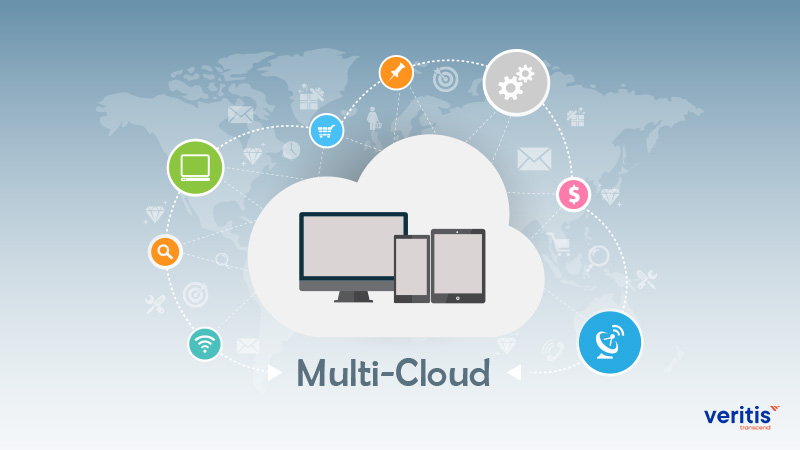
Multi-cloud has been creating a major buzz in the IT industry in recent times. Though it it is often confused with hybrid cloud because of certain similarities, specific distinctions remain between the two.
While hybrid cloud is an amalgamation of on-premises private cloud and third-party public cloud, multi-cloud is a mix and match combination of cloud services from different service providers catering to specific workload requirements. In other words, multi-cloud is one form of hybrid cloud running in multiple public cloud environments.
Recent surveys have indicated that as the enterprise cloud computing focus shifts to the public cloud, private cloud adoption has decreased among enterprises from 77% to 72% over the past year. There has been a corresponding increase in companies adopting a multi-cloud strategy with IDC estimating that 85% of enterprises will be multi-cloud enabled by 2018.
Why Multi-cloud?
A multi-cloud strategy enables several strategic benefits. Companies relying on a single cloud service provider might encounter problems such as cloud data center outages or bandwidth issues that could potentially hamper their business and even result in possible loss of customers, especially when some of their critical applications are involved. Usage of multiple cloud services ensures that the risk of downtime and data loss are averted even if there is a failure with respect to any components in the software, hardware, network, etc.
Additionally, a multi-cloud strategy provides companies the flexibility to specifically cater to the divergent requirements of their different business functions, teams and departments. These can include security, privacy, performance or geographic reach of their cloud.
Operational excellence, improved disaster recovery and unlimited scalability are a few of the other benefits of the multi-cloud approach.
Possible Challenges
Though there are numerous positives of adopting the multi-cloud strategy, on the flip side, it can become difficult for organizations to manage the operations across different cloud environments spanning different vendors without proper monitoring and control.
Companies need to consider issues such as risk, governance and data residency, along with other challenges like pricing, usage-tracking, and management of multiple reporting systems and operating models while formulating their multi-cloud strategy.
While there are a few concerns about any downtime that may be involved in moving the humongous data running into petabytes, the Active Data Replication technology ensures simpler migration of data between the clouds.
In Conclusion
The ever-increasing adoption of multi-cloud by organizations can be attributed to many drivers such as flexibility and options to tailor each cloud according to their specific business requirements. Today, over three-fourth of the enterprises use eight different clouds on an average.
Gartner estimates the multi-cloud market to be worth USD 240 billion by next year.
Companies need to involve their IT and business units and work with the right partner in setting up an ideal multi-cloud solution. That can shift their focus from managing technology infrastructure to investing in business transformation, thereby deriving the maximum competitive advantage.
The Way Forward
Please contact Veritis at connect@veritis.com for more insights and responses to queries on Multi-cloud.